
Baltimore County Police Department Air Support Team

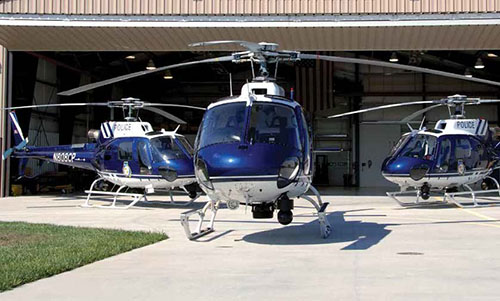
Believe it or not, it all started in 1659, when the earliest known record of Baltimore County, MD, was a writ issued to its sheriff, and is considered by historians to be the official year of its founding/establishment date among the 23 counties of the State of Maryland. The separation of Baltimore County from Baltimore City, which it surrounds on three sides (east, north and west), occurred on July 4, 1851. The name of the county was derived from the barony of the proprietor of the Maryland colony, Caecilius Calvert, Second Baron Baltimore, and the town of “Baltimore” in County Longford, Ireland.
History of the Baltimore County Police Department
The Baltimore County Police Department was established by the Maryland State Legislature on April 11, 1874. The Maryland Legislature approved what became Chapter 374 of the Laws of Maryland. This authorized the Baltimore County Commissioners “to appoint such number of policemen as they may deem necessary, for the better protection of persons and property; the number not to exceed 30 at any one time, and to designate such number of said policemen as they may deem advisable, not exceeding five, as chief policemen.”
A second provision stated that “the pay of each policeman shall be two dollars per day, except such police as may be mounted; and mounted policemen shall furnish their own horses, trappings, equipment and forage for horses, and the pay of the mounted policemen shall be three dollars per day.” On June 17, 1874, the County Commissioners divided the two-mile portion of the county bordering the Baltimore City boundary into five districts and appointed the first police force. Officers were appointed to one-year terms.
Today there are still mounted policemen, but these officers and their mounts fly to where they are needed.
The Aviation Team
The Air Aviation Team was started in 1983 as a fixed-wing operation only. Helicopter operations did not start until 1990 … and so the story begins.
The Aviation Team consists of a supervisor (a sergeant/pilot), five full-time officer/pilots, and five tactical flight officers (TFOs). The pilots serve a dual role as pilot and TFO and must be proficient in the TFO skill set. Pilots and TFOs are selected from within the ranks of the police department.
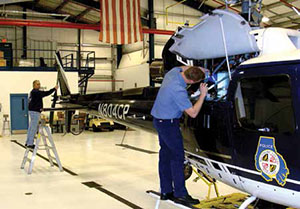
To be eligible to apply for the officer and pilot position, applicants must possess an FAA commercial pilot license and FAA medical certificate and have a minimum of 1,000 turbine helicopter flight hours as a pilot in command.
To be eligible for selection as a TFO, applicants must have a minimum of five years of commendable departmental experience. TFOs come from varied backgrounds within the department in the fields of patrol, traffic and criminal investigation. Pilots and TFOs must complete a competitive selection process that includes a resume review, an in-flight practical evaluation, a panel interview and underwater egress training.
Our interview is with Sergeant David McVey, support operations division, Baltimore County police aviation team, and Jim Fugate, chief inspector, Sterling Helicopter, in Croydon, PA. Sterling provides the maintenance for the Baltimore County police department’s aviation team.
Helicopter Maintenance – How long have you been in operation?
McVey – The Baltimore County Police Department Aviation Team began in 1983 on a one-year, one dollar lease agreement with an officer for use of his Cessna C-150F. Today, we are a full-time helicopter only operation providing 16 hours of patrol coverage each day (9:00 a.m. to 1:00 a.m.), with 24-hour on-call availability. Since 1983, we have flown more than 35,000 flight hours without an accident. We’ve been with Sterling Helicopter for maintenance since 1997. Over the years they have continued to demonstrate they are a well-managed business that provides us with the security of knowing that all of their employees are pledged to our safety and complete customer satisfaction.
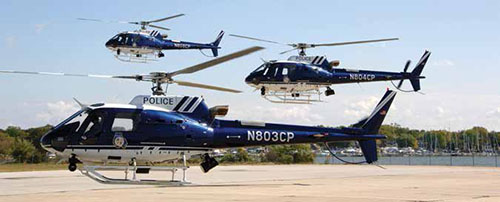
Fugate – Sterling Helicopter started in 1984, based on the vision of its chairman, Jack Brown, a pilot and aviation enthusiast. As Philadelphia’s only heliport and helicopter repair station, Sterling has built an excellent reputation offering professional helicopter services locally, nationally and internationally, meeting the needs of municipalities, corporate executives and transient travelers alike. The repair station business outgrew the capacity of the Penn’s Landing heliport facilities and in 2006, the Croydon facility opened for business.
Helicopter Maintenance – How many helicopters do you operate and what type are they?
McVey – We operate three Airbus Helicopter AS350B3s with the designated call signs of “County Air” 1, 2 and 3. We conduct operations from our hangar on the property of the Martin State Airport in Middle River, MD.
Helicopter Maintenance – How large an area do you cover?
McVey – We are responsible for covering the 612 square miles of Baltimore County and the 175 miles of its shoreline. We also support and assist other neighboring agencies in the Baltimore metropolitan area.
Helicopter Maintenance – What are the aviation team’s primary duties?
McVey – The aviation team participates in a wide variety of police activity across the county, including daily patrol and neighborhood crime fighting. The helicopters are tools that are crucial to officer safety because they can respond rapidly to provide command and control, and valuable information during critical incidents. We respond to crimes in progress, barricaded suspects, searches for missing and wanted subjects, suspects fleeing on foot, vehicle pursuits and HAZMAT incidents, to name a few. We also fly proactive surveillance flights over high-crime areas and perform checks on the security of critical infrastructure around the county that is related to homeland defense. The aviation team is also an invaluable asset in searching for missing children and elderly persons with our ability to cover a large area in a short period of time.
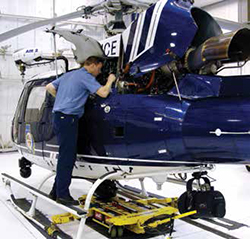
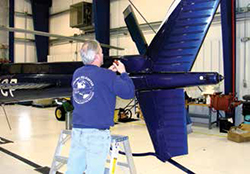
In 2013, we flew more than 1,600 flight hours and responded to more than 4,000 calls for service supporting the patrol division and specialized investigative units. The total calls for service included more than 1,800 searches and resulted in 255 arrest assists, the recovery of 27 LOJACK equipped stolen vehicles, and the location of 30 critical missing subjects who were either returned home or were taken to a medical facility. In addition, we also flew in support of and assisted neighboring jurisdictions and federal agencies.
The aviation team conducts aerial surveillance for large-scale critical incidents, providing a live feed microwave video downlink signal to the department’s incident command post. In 2013, we responded to a train derailment, explosion and fire in the county. The contents of several train cars were unknown. The assistance we provided to both our departmental command post and the fire department’s command staff with live aerial video feeds was critical in assisting them with the identification of HAZMAT placards on train cars, directing responding police and fire units to the scene, and assisting with the management of traffic control and detours around the area.
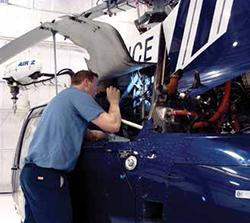
In addition to normal patrol duties throughout the county, we perform search and rescue operations with advanced tactical rescue (ATR) technicians from the Baltimore County fire department’s station No. 17. Together, with the ATR team and Maryland Army National Guard aviation assets, we comprise the Maryland Helicopter Aquatic Rescue Team (MD-HART). All flight crews and ATR personnel have been formally trained using U.S. Coast Guard standards for hoist operations. Together we conduct quarterly rescue hoist training. We have used the hoist to conduct actual rescues in the past several years.
Helicopter Maintenance – Since we have already established that you use Sterling Helicopter for your main maintenance support, is there any maintenance you do yourselves?
McVey – Limited preventive maintenance is performed by a select few pilots and our A&P-trained pilot. For example, 30-flight hour/weekly inspections or changing nav light bulbs. The non-A&P pilots have been formally trained by Sterling Helicopter’s chief inspector, Jim Fugate. Any maintenance beyond that scope is done by Sterling Helicopter.
Helicopter Maintenance – What special mission equipment do you carry, if any, and how does that impact maintenance procedures?
McVey – Each of our helicopters is identically equipped with a forward-looking infrared (FLIR) Ultra 8000 thermal image/day camera system, an AeroComputer UC-5100 tactical mapping system, an SX-16 search light, Garmin GNS 530 TCAS, LOJACK PTC-3 police tracking system, a Wulfsburg C-500 multi-channel radio, a Morotola 800 MHz patrol radio, Breeze-Eastern rescue hoist, Troll Systems Skylink C100 microwave video downlink system and airborne deployable water rescue life-saving equipment. Each system has its own unique maintenance issues and inspection schedules completed by Sterling Helicopter or serviced by the manufacturer.
Additionally, all of the aircraft are configured for night vision goggle (NVG) operations. Our pilots and tactical flight officers are all NVG certified. We fly nightly using the model AN/AVS-9(V) NVGs.
Helicopter Maintenance – Do you use engine inlet barrier filters?
Fugate – No, based on Baltimore County’s operating environment, their aircraft bleed air operated particle separator with installed sand filters is adequate.
Helicopter Maintenance – How do they help your type of operation?
Fugate – The sand filters are designed to protect the engine from sand ingestion during hovering flight or when flying in sand-laden environments. They are also designed to protect the air intake against any potential induction of snow in flight. We do fly in snow. With the sand filters installed, flight under falling snow is permitted without any restriction with regard to engine operation.
Helicopter Maintenance – Do you have to deal with any high and hot operations?
Fugate – No, although in the summer months it does get hot and very humid in Baltimore. These aircraft are well suited to operate in that environment.
Helicopter Maintenance – How do you deal with the corrosive environment to which you are exposed occasionally?
Fugate – The helicopters do operate in close proximity to a salt/brackish water environment (Chesapeake Bay), and at times conduct over-water operations and training. However, it does not adversely impact our maintenance operation. Aircraft are always given a vigorous fresh water wash down after any sustained over-water operations.
Helicopter Maintenance – From a flying perspective, under what part FAR do you operate?
Fugate – We operate under Part 91.
Helicopter Maintenance – From a maintenance perspective, are you certified under a particular part number as a repair station?
Fugate – Sterling Helicopter is a Part 145 certified repair station and Airbus helicopter service center.
Helicopter Maintenance – How many people are in your maintenance department by job description?
Fugate – Sterling Helicopter is essentially the Baltimore County police aviation team maintenance department. Their maintenance management team consists of the unit supervisor (sergeant), a pilot/maintenance officer, a pilot/A&P, one contract A&P and me, the contract chief inspector. What cannot be done at their facility we get done here at our facility. We support them with the full complement of service and mechanical expertise of a certified repair station.
Helicopter Maintenance – How many maintenance shifts do you operate?
Fugate – Since we are contracted and not full time at their hangar, we operate on an as-needed basis for scheduled and unscheduled maintenance. We support the needs of their patrol operation which operates daily from 9:00 a.m. to 1:00 a.m. We are available anytime day or night for emergency maintenance needs.
Helicopter Maintenance – In a typical 30-day period, how many and what type of inspections do you normally perform?
Fugate – We normally have to complete at least one 100-hour, and several 30-hour inspections a month. From time to time, we also have unscheduled maintenance issues that we take care of.
Helicopter Maintenance – What maintenance tasks do you outsource to an MRO or back to the OEM and why?
Fugate – With the exception of component and engine overhauls, we do all of the maintenance on the aircraft, scheduled and unscheduled. Components are sent back to Airbus and engines to Turbomeca because that’s the way the manufacturers prefer it to be done.
Helicopter Maintenance – From start to finish, what is your procedure for doing a maintenance repair or inspection?
Fugate – Sterling uses a maintenance tracking spreadsheet that is used to track and forecast all of our maintenance. When an inspection is due, we will make arrangements for the aviation team to bring the aircraft to us, or we will travel to them depending on the scope of the inspection. For unscheduled issues, they call and we respond. We start by opening a work order and checking all airworthiness directives and service bulletins for compliance and applicability. All inspection tasks are performed, discrepancies listed and parts ordered. After discrepancies are cleared, ground runs and flight checks are performed and the aircraft is returned to service.
Helicopter Maintenance – What lessons learned or tips you can share with our readers on a particular task that you found can improve on the maintenance process in the way of saving time, cost, materials, etc?
Fugate – Planning ahead and keeping parts that are high wear items on hand always saves time. Staying ahead of the maintenance is the key to maintaining any aircraft.
Helicopter Maintenance – Who performs pre-flight and post-flight inspections on the aircraft?
Fugate – Pre-flight and post-flight inspections are completed by the flight crew/pilots each day.
Helicopter Maintenance – Who has the responsibility for assigning aircraft to flight operations?
McVey – I assign aircraft for our daily operations along with any maintenance tasks that must be completed each day or scheduled later in the week to support flight operations. At the end of each night, our pilots update a maintenance status board in the hangar noting the total hours flown, time to next inspection and any deficiencies that were written up in the aircraft log books from the day’s flights. The board is then used as a tool to schedule maintenance and to determine which aircraft will be flown during that day’s patrol operation. I manage the flight hours to ensure we are flying on budget and the aircraft are sequenced into major inspections to avoid having more than one aircraft out of service at the same time.
Helicopter Maintenance – Has the group started any initiatives regarding the push towards a safety management system (SMS)?
McVey – From day one we have always stressed safety in our operation. We abide by the Public Safety Aviation Accreditation Commission (PSAAC) and Airborne Law Enforcement Association (ALEA) accreditation standards as a base line for our safety program. In that endeavor, Sterling Helicopter supports us 100 percent. With Sterling’s support, we have won several national FLIR Vision awards and the International Association of Chiefs of Police (IACP) Excellence in Law Enforcement Aviation Award for units with three or less aircraft. The award recognized our aviation team’s outstanding safety and training programs as well as our exemplary mission performance.
The Baltimore County Police Department enforces the laws and ordinances of the state and county, safeguards life and property, prevents and detects crime, preserves the peace, and protects the rights of all citizens …and the aviation team is an important part of this effort and policy.
